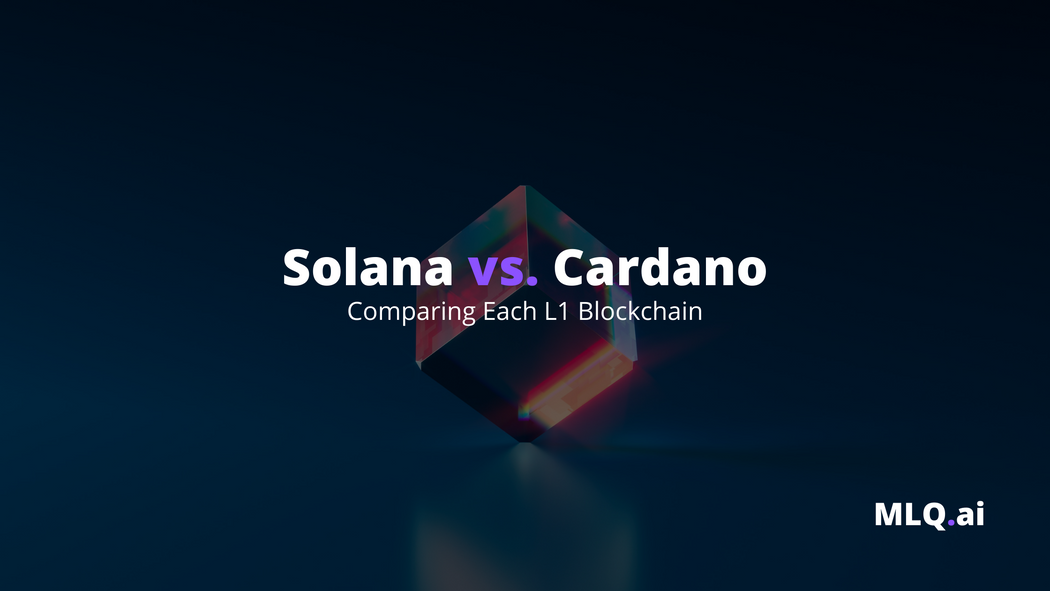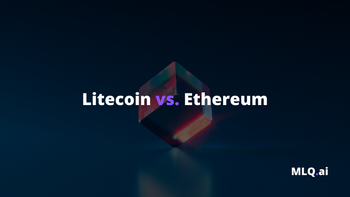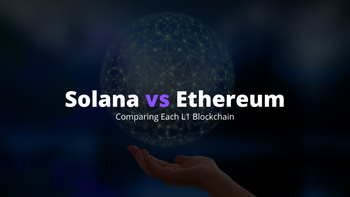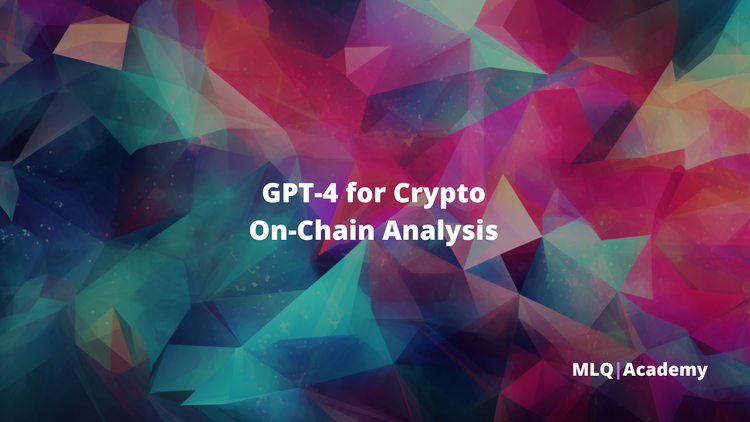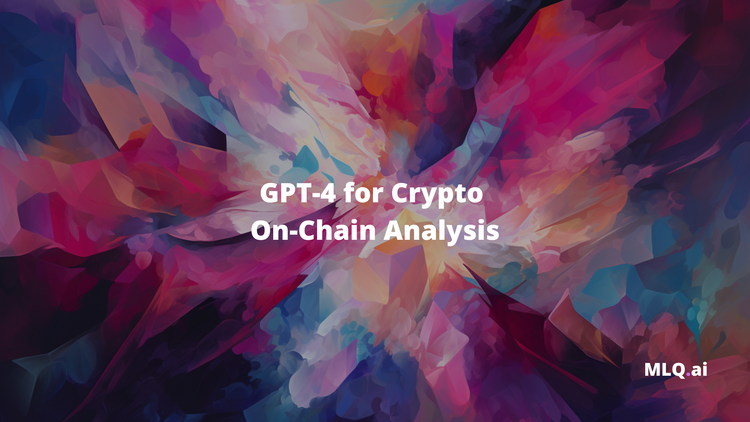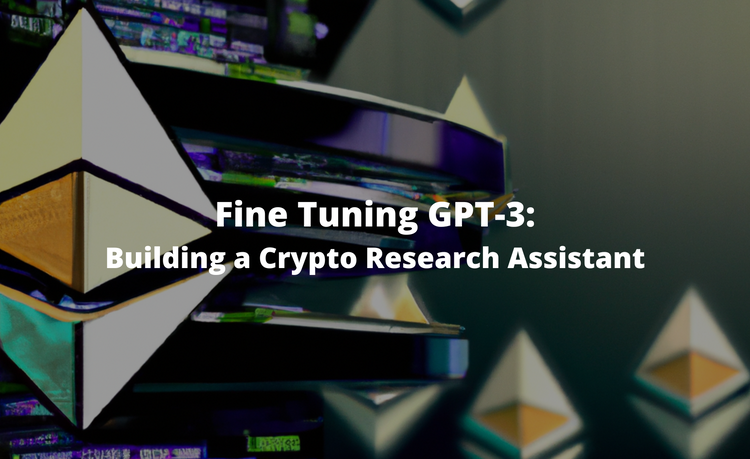With crypto trading gaining more popularity amongst mainstream investors a popular strategy is to try to find the next Bitcoin or Ethereum. Altcoins like Cardano and Solana have been two of the best performing projects over the past couple of years, and both networks find themselves in the top ten cryptocurrencies by market cap.
In this guide, we will provide an overview of each layer-1 blockchain, and determine if either of these projects deserve the nickname of ‘Ethereum killer’. Without taking a maximalist view for either token, we will instead dive deeper into how Cardano and Solana will play a role in secular trends like Web3.0, DeFi, NFTs, and gaming.
We will cover the following topics in our comparison of Cardano and Solana:
- An overview of Cardano
- What is Proof of Stake?
- Ouroboros Consensus Mechanism
- The Cardano Roadmap
- The Future of Cardano
- Pros and Cons of Cardano
- An overview of Solana
- What is Proof of History?
- Solana Network Instability
- The Future of Solana
- Pros and Cons of Solana
- The Case for Cardano
- The Case for Solana
Stay up to date with AI
This guide should not be used as financial advice, rather it is to provide a closer look at the benefits, drawbacks, use cases, and future potential for both Cardano and Solana.
Overview of Cardano
Cardano is the brainchild of one of the original founders of the Ethereum blockchain, Charles Hoskinson. The project was founded back in 2015, and is currently, although not for long, the largest blockchain to utilize a Proof of Stake blockchain.
Cardano is often referred to as ADA, which is the name of its native token. Cardano is to ADA as Ethereum is to Eth. The Cardano network itself was named after the Italian mathematician, Gerolamo Cardano, while the ADA token was named after Ada Lovelace. Similar to Satoshis in Bitcoin, 1 million Lovelaces make up an ADA.
There are some unique features to Cardano that have gained the network both fans and critics. The first of which is the fact that Cardano does not have a white paper. This is atypical for a project as large as this, and while Hoskinson has since released some long-term plans for the future of Cardano, it hasn’t been in the form of a classic white paper. Currently, Cardano sits as the eighth largest crypto project with a market cap of $40 billion USD.
What is Proof of Stake?
Proof of Stake is a consensus mechanism that some cryptocurrency networks use to validate the blockchain. Rather than relying on a series of computations like on a Proof of Work network like Bitcoin, instead, on a Proof of Stake blockchain, users can stake the token to become validators of the network. By staking their tokens, these users will receive a monetary reward as well as uphold the legitimacy and authenticity of the blockchain.
Another positive to Proof of Stake is that removing the complex computations from the equation deeply reduces the amount of electricity needed to power mining rigs and computers. This makes Proof of Stake a much more environmentally friendly solution compared to networks like Bitcoin and for now, Ethereum.
Proof of Stake has also proven to be a more secure form of blockchain validation, as it guards against what is known as a ‘51% cyber attack’. As the validation is spread across millions of different stakers, it is much more difficult for a malicious attacker to gain control of 51% of the network, which could then lead to things like mass liquidation.
The Ouroboros Consensus Mechanism
Cardano’s network utilizes the Ouroboros Proof of Stake consensus mechanism. It is the first provably secure Proof of Stake mechanism, and has the unique ability to run both permissionless and permissioned blockchain networks. Hoskinson has described Ouroboros as the most energy efficient way to validate a Proof of Stake Protocol, and it is also notably used by the Polkadot blockchain. At its peak, the Ouroboros consensus mechanism is believed to be up to 4 million times as energy efficient as Bitcoin.
The discussion of energy efficiency and crypto mining has been hotly debated over the past couple of years, something that the Cardano team is well aware of. The project has a well-documented ethos of transparency and Hoskinson himself has been a proponent of utilizing more environmentally friendly ways of producing and running crypto networks. Ouroboros uses a combination of cryptography, combinatorics, and mathematical game theory to uphold the integrity and security of the network.
The Cardano Roadmap
Cardano has a well publicized roadmap that shows that the project is only about half way to its ultimate goal. The Cardano roadmap is divided into five distinct epochs:
- Byron - Foundation
- Shelley - Decentralization
- Goguen - Smart Contracts
- Basho - Scaling
- Voltaire - Governance
In September of 2021, Cardano entered Phase 3 of its roadmap and implemented the use of smart contracts into its network. This has effectively opened up the Cardano network for projects in DeFi or decentralized finance, NFTs, and other projects. For reference, smart contracts is one of the main features that set the Ethereum network apart. Smart contracts allow for the potential of true decentralization and provide the ability for a network to operate autonomously without any third-party interference.
The next phase of the Cardano Roadmap is scaling. Currently, Cardano can offer about 250 transactions per second, but with the upcoming Ouroboros Hydra upgrade, the team is hoping this number can be raised to as high as 1 million. For comparison, Ethereum currently does about 30 TPS, Bitcoin about 5 TPS, and Solana about 65,000 TPS and anywhere up to 710,000 TPS. Of course once Ethereum switches to Proof of Stake, sharding will give it the ability to hit in the hundreds of thousands of TPS.
The Future of Cardano
Predicting the future of a crypto project is difficult, to say the least, but Cardano has all of the steps in place to position itself to be an industry leader for years to come. When we talk about how big a crypto token can get we often discuss it in terms of flipping other projects. Two of the seven projects ahead of Cardano are stablecoins, and it seems unlikely the project will be able to flip Bitcoin or Ethereum.
Cardano seems destined to be positioned at the back of the top ten, unless something dramatically changes for the project. With Ethereum soon to be moving to a Proof of Stake model, it is likely most DeFi and NFT projects will stay with Ethereum rather than migrate to Cardano.
In terms of the price of ADA, it’s difficult to imagine it ever climbing to the heights of Bitcoin or Eth. One reason is that Cardano has a very high supply of about 45 billion ADA. There is also currently no burning mechanism so Cardano is in fact an inflationary token. While this inflation rate will continue to decrease over time until it is less than 1% in 2030, this also means the supply might always outpace the demand.
Pros and Cons of Cardano
- Cardano’s integration of smart contracts opens the blockchain up to multiple different projects in DeFi and NFTs.
- Its Ouroboros Proof of Stake mechanism is energy efficient and has the ability to scale to tremendous TPS in the future.
- ADA is inflationary and its price upside may be relatively capped for the time being.
- Cardano might have missed the boat with gaining users as Ethereum is now moving to Proof of Stake.
Overview of Solana
Solana launched in 2019 by a former lead developer at Qualcomm, Anatoly Yakovenko. The token burst onto the crypto scene in July of 2021 though, as we proceeded to experience the first Solana Summer event where the price of Sol climbed from about $30 in July to nearly $200 in September. Solana is a project that has established itself as one of the leading blockchains for DeFi, NFTs, and gaming.
Solana looks to solve the blockchain trilemma of security, decentralization, and scalability. Solana already has over 400 dApps or decentralized applications used in DeFi, and is one of the leading choices for networks as we shift towards the new paradigm of Web3.0.
Solana utilizes a very novel way of operating as it implements a Proof of Stake model, as well as a revolutionary Proof of History model. In combination, these two mechanisms allow Solana to reach its high TPS and potentially scale to infinite possibilities.
Solana also utilizes smart contracts which is why it can be used for a wide variety of different projects. As of the end of 2021, Solana had over $15 billion USD locked into its blockchain.
What is Proof of History?
Proof of History is another consensus mechanism for trusting timestamps for transactions on the blockchain. It uses a verifiable delay function, which basically means that every inbound and outbound transaction has a sequence of events. As the name suggests, the blockchain is able to maintain its validity by using this proof of historical transactions. It’s not a simple concept to wrap your head around, but for the purposes of investing in Solana, Proof of History provides the ability for the blockchain to process transactions at lightning fast speeds.
Solana Network Instability
When reading about Solana, you might come across some question marks surrounding the stability of its network. In late 2021, the Solana network was hit with spam bots that caused an overload of transactions, leading to a so-called implosion of the Solana blockchain. In real-world terms, this implosion was really just transaction failures. Still, the crypto world took notice, and Solana’s price suffered.
Solana’s instability was a reminder to many that there may never be a replacement for the Ethereum layer-1. High gas fees might just be the penalty for security and reliability. Still, Solana remains one of the most-used blockchains in the crypto world having processed over 65 billion transactions with gas fees remaining at less than $0.01. It is anticipated that OpenSea, the largest NFT marketplace in the world, is about to integrate Solana’s NFTs into its ecosystem. This would boost Solana’s exposure, and allow the over 1 million users on the platform to have access to Solana’s booming NFT market.
The Future of Solana
What is the future of Solana? Few blockchains, if any, have been able to match Solana’s speed and scalability, which puts its technology at the top of the innovative spectrum. One market that is heating up for Solana is its GameFi or gaming finance sector. Solana has already teamed up with major franchises like PUBG to provide play to earn titles that will establish the foundation of the gaming industry in both the Metaverse and Web3.0.
Solana is too fast, too innovative, and too ingrained in the crypto world. What investors really care about is the long-term price of Sol. Unlike Cardano, Sol has a fairly limited supply with a circulating amount of only 325 million Sol. Any gas fees are also paid in Sol which allows the token to continuously be burned. So yes, Sol is deflationary, and this may help keep the price of the token elevated. Long-term forecasts for Sol are bullish for sure, with some anticipating the token could be worth more than $5,000 USD by 2030, although we're not here to make price predictions.
Pros and Cons of Solana
- Innovating Proof of Stake and Proof of History mechanisms provide Solana with unparalleled scalability and transaction speed.
- The Sol token is deflationary and has a high ceiling in terms of price action.
- Solana is one of the most used blockchains for DeFi, NFTs, and gaming.
- The instability of the Solana network will always be a concern.
- Solana is still in Ethereum’s shadow, just like Cardano and other altcoin blockchains.
The Case for Cardano
As an investment, Cardano is attractive to new crypto traders because of its cheap token price. What we have to consider is how much it can grow in the future. The good news for Cardano bulls is that relatively speaking, the project is still in its early days.
We are only six months into the introduction of smart contracts, which exponentially broadens the scope of the Cardano network. Next comes true scalability, and the implementation of the Ouroboros Hydra upgrade could mean that Cardano finally sees the same TPS as Solana and Proof of Stake Ethereum. Thus far, Cardano’s blockchain hasn’t really seen any major hacks and has not shown itself to be a network susceptible to malicious activities. That doesn’t mean it can’t happen, but so far Cardano has emerged relatively unscathed.
Although it is in Phase 3 of its roadmap, Cardano is still in its infancy in terms of project growth. A majority of the development will come after the implementation of smart contracts and the upgrade to a higher TPS. Can Cardano lure developers from Ethereum? Only time will tell.
The Case for Solana
The case for Solana is a lot more cut and dry than it is for Cardano. Solana is already being used across the DeFi, NFT, and gaming landscapes, and its technology is proving to be unparalleled in the crypto industry. The only question mark for Solana remains in the instability of its network.
Can Solana ever be trusted as a network as large as Ethereum? Users and developers will have to, but we have already seen in the past that Solana is susceptible. In the long-term, it’s hard not to be bullish on Solana though. Not only does it have the approval of the crypto industry, but it is also receiving mainstream and institutional acceptance. With the integration of partnerships with platforms like OpenSea and PUBG, Solana is widely seen as the second most usable blockchain for major projects, after Ethereum.

